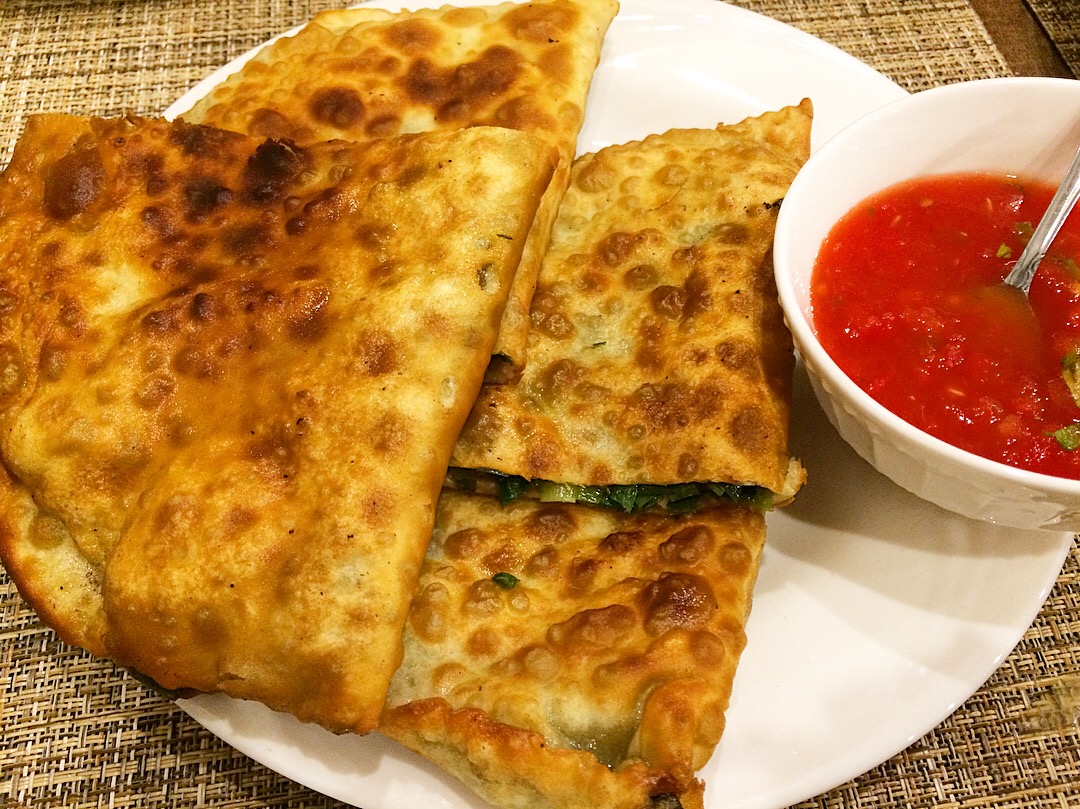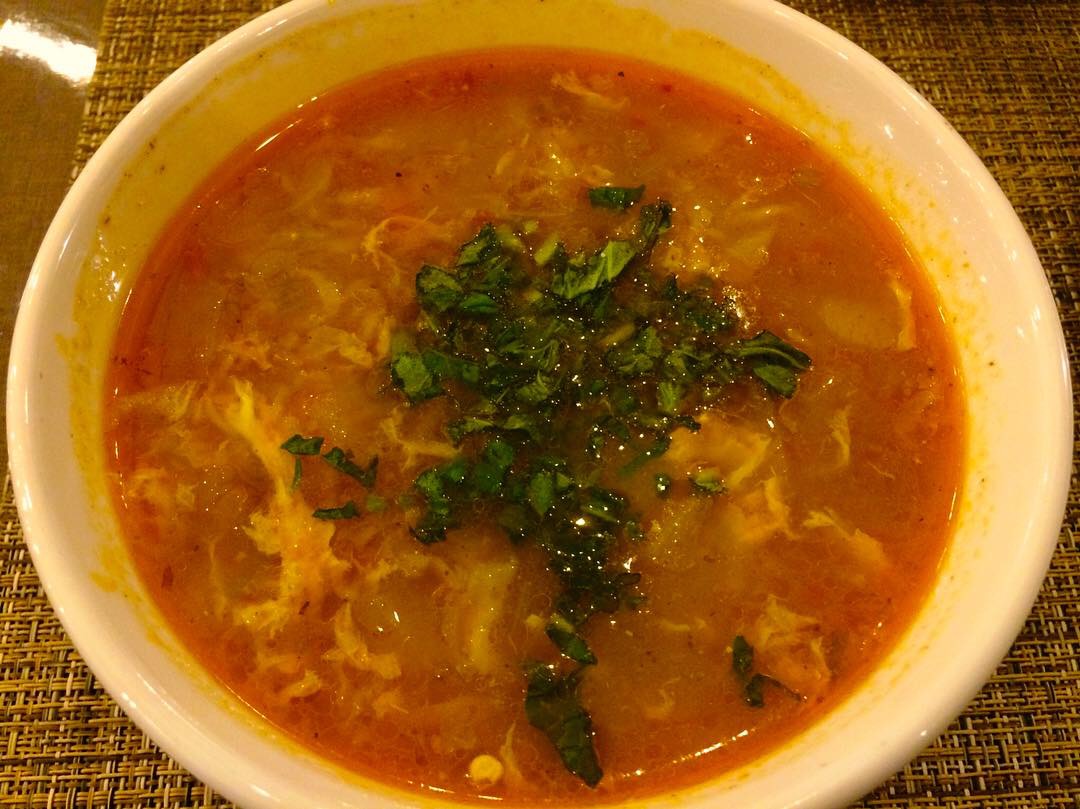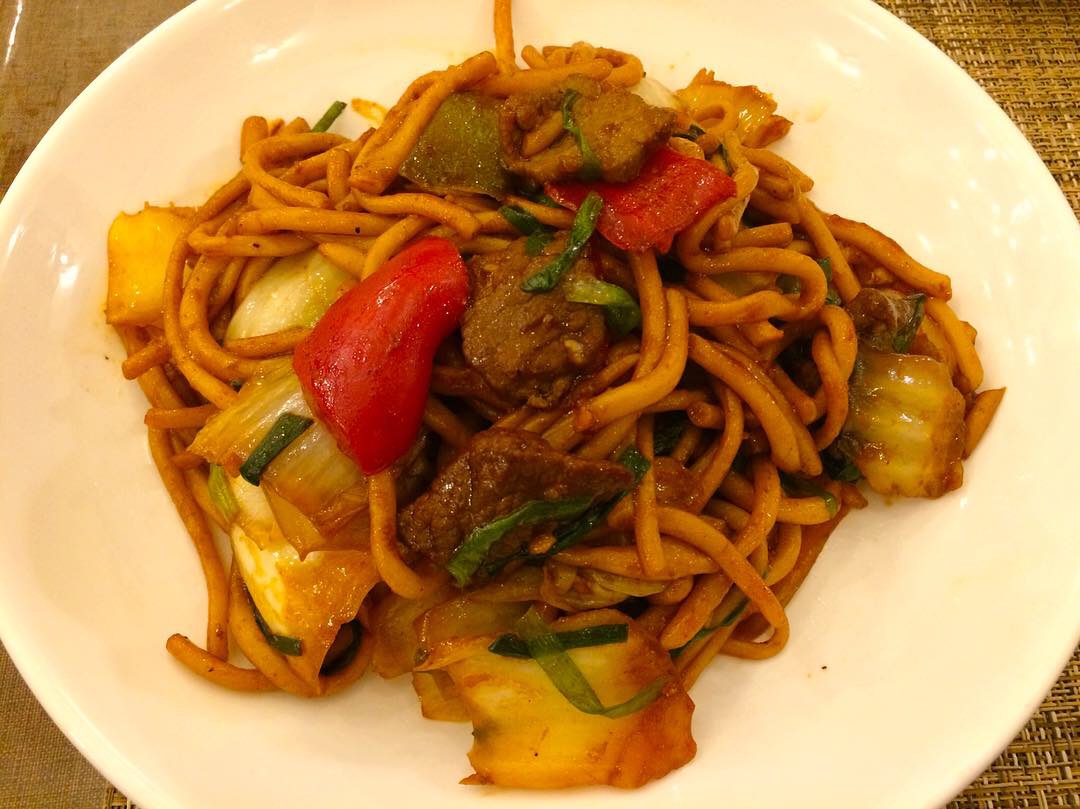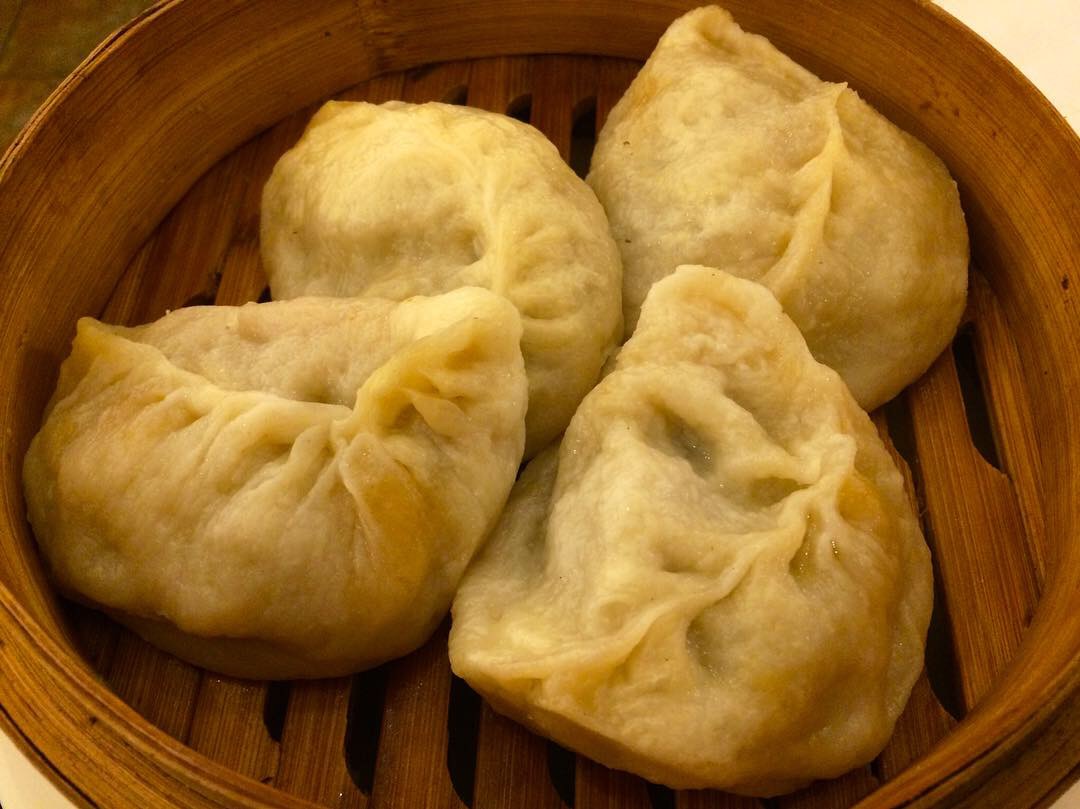The recently opened Lagman House at 2612 East 14th Street in Sheepshead Bay, Brooklyn, is New York’s first restaurant to feature Dungan cuisine. “Dungan” refers not to a geographical region but rather a Muslim ethnic group that settled in western China in “the Stans” bordering Russia. The language is an offshoot of Mandarin Chinese and is spelled in Cyrillic; if you can speak “menu Chinese” and read a little Russian, you’ve got it knocked, but it’s all there in English as well.
It’s one of those restaurants that compels me to eat my way through the menu, item by item, so fasten your safety belt and loosen your waist belt – here we go!
(Click on any image to view it in high resolution.)

Beshbarmak – often referred to as the national dish of Kyrgyzstan: thick, hand rolled dough cooked in broth and topped with meat. The menu indicated that it could be ordered with either lamb (which would have been my choice) or beef, but we were told that since there wasn’t enough call for lamb, they no longer offered it. If necessary, I will single-handedly bring in enough lamb-lovers so that it will take its rightful place on the table! In the meantime, this is absolutely a must-do dish when you come – even with beef, shown here.

Dungan Style Salad – carrot and radish in a tangy dressing. Our extremely helpful waiter told us we could just eat it straight or mix it in with the noodle dishes for a little extra kick. We did both.

Classic Lagman – Hand pulled noodles topped with fried beef and onions. Note the Chinese linguistic influence: lo mein -> lagman. Delicious. Insiders’ tip: when the menu describes something as “fried”, it means stir-fried, not deep fried. Also, they brought out the noodles pre-cut since they might prove unmanageably long if they hadn’t. On my next visit, I’m considering requesting uncut noodles; I’m betting we can deal with them or at least have fun trying! (Just a thought for you Instagram noodle lifters 😉!)

Dapan Ji – handmade noodles topped with “fried” chicken, potatoes, and spicy pepper. Ever had Chinese “Big Tray Chicken,” dapanji? There’s that language connection again. I think these noodles were a bit thinner than those in the beshbarmak and shaped more like the flat noodles you’re familiar with.

Huashi. Looks like a soup, but that’s hardly the word for it; as a matter of fact, it’s not even listed in the Soups section of the menu – go looking for it and you’ll find it heading up the Meat Dishes. Six types of meatballs along with pickled cabbage in beef broth fill your bowl to the brim with satisfying deliciousness. Definitely a highlight.

Lamian. Hand pulled noodles topped with “fried” beef and potatoes. Note the Chinese language influence again: lo mein -> lamian. Make good use of the two accompaniments, a spicy chili sauce and grated garlic.

Chives Gravy. Sautéed chives with eggs and meat. There are six “gravy” dishes on the menu; these would be best accompanied by a bread like Jin Momo. You’ll definitely want some kind of neutral starch with these dishes.

Jin Momo. Steamed bread, a little like Chinese bao, but with a lot more character; surprisingly good!

Justai Hezi, or so the menu transliterates it. (My far-from-perfect Russian leads me to believe that “jutsai” might come closer to the actual pronunciation.) A fried turnover stuffed with chives and beef; you’ll want to apply the supplementary sauce generously.

Bon Thon Soup. This unusual and delicious beef and vegetable soup features buoyant, gossamer bits of noodle dough floating within.

Tsomian (from the Chinese chow mein). The next step up from classic lamian, these long hand pulled noodles are stir-fried with beef and vegetables in a savory sauce.

Manti. Fist-sized dumplings filled with beef and chives; impossible to resist.
Lagman House is located at 2612 East 14th Street in Sheepshead Bay, Brooklyn. Highly recommended!
